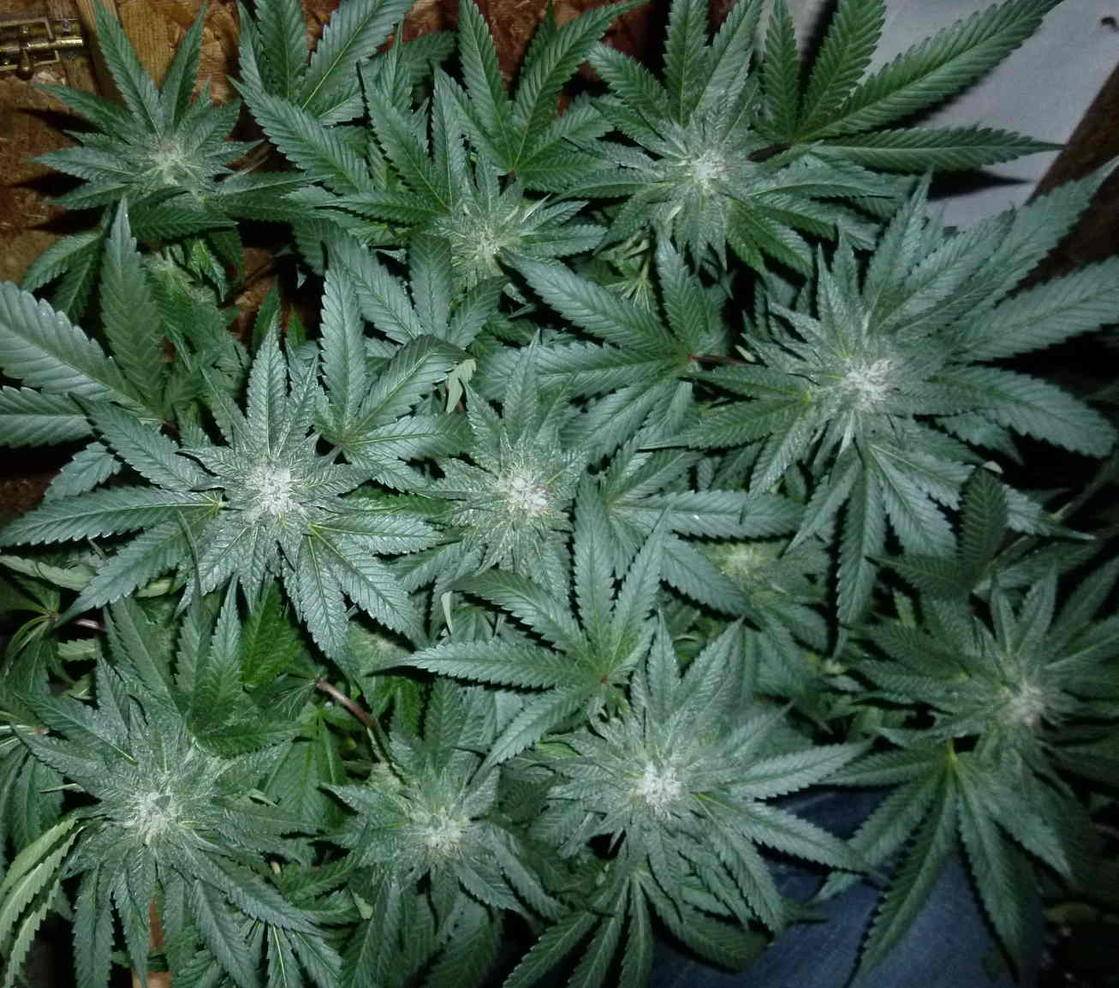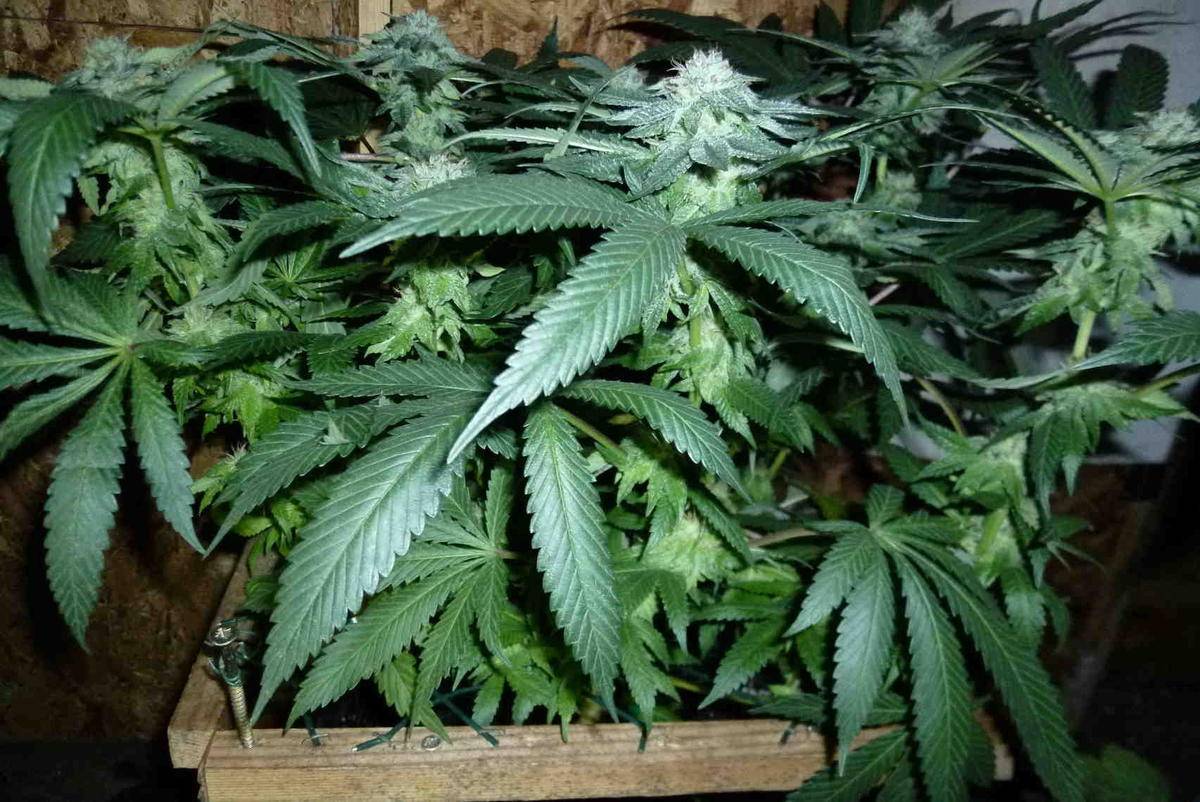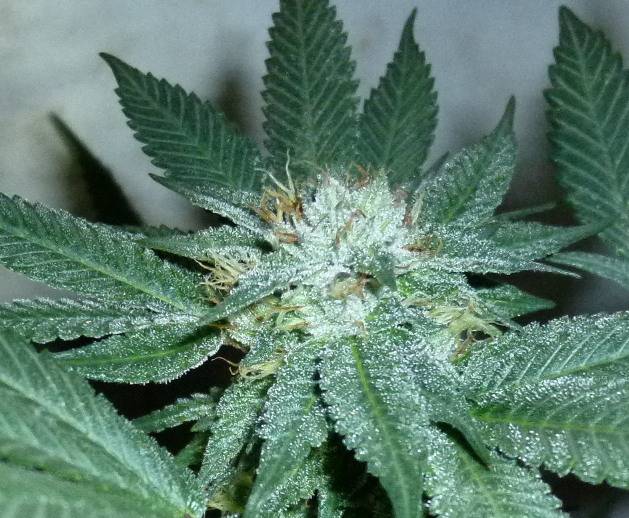-
Happy Birthday ICMag! Been 20 years since Gypsy Nirvana created the forum! We are celebrating with a 4/20 Giveaway and by launching a new Patreon tier called "420club". You can read more here.
-
Important notice: ICMag's T.O.U. has been updated. Please review it here. For your convenience, it is also available in the main forum menu, under 'Quick Links"!
You are using an out of date browser. It may not display this or other websites correctly.
You should upgrade or use an alternative browser.
You should upgrade or use an alternative browser.
The IC Organic Growers Community Thread.
- Thread starter VerdantGreen
- Start date
Didn't think it was necessary to start a whole thread for this so I figured here would be a perfect place to ask...
I have been slacking on composting my plant watse... i.e: fan leaves, root balls, main stems,.. etc...
I have just been letting it accumulate in rubbermaid containers for a few months now... I don't know what else to do with it besides compost it but I have just been slacking and don't feel like carrying from all the way upstairs to the compost bin outside because it would take multiple trips and I don't want anyone to realize I am bringing shit from inside my house outside to compost it... if it was a small amount it would be no big deal... could just be some veggie scraps and eggs shells but this would take multiple 5 gal buckets...
anyway the real question... we got notice that this is our last year available to lease this place because they want to put it up for sale...
SO... I want to get this shit composted so I don't have to take it with me when I move... BUT how long will it take for everything to properly compost to the point where if someone looked in there and mixed it around they wouldn't be able to recognize anything...?
sorry for the essay guys.. lol
thanks
I have been slacking on composting my plant watse... i.e: fan leaves, root balls, main stems,.. etc...
I have just been letting it accumulate in rubbermaid containers for a few months now... I don't know what else to do with it besides compost it but I have just been slacking and don't feel like carrying from all the way upstairs to the compost bin outside because it would take multiple trips and I don't want anyone to realize I am bringing shit from inside my house outside to compost it... if it was a small amount it would be no big deal... could just be some veggie scraps and eggs shells but this would take multiple 5 gal buckets...
anyway the real question... we got notice that this is our last year available to lease this place because they want to put it up for sale...
SO... I want to get this shit composted so I don't have to take it with me when I move... BUT how long will it take for everything to properly compost to the point where if someone looked in there and mixed it around they wouldn't be able to recognize anything...?
sorry for the essay guys.. lol
thanks
that depends how active your pile is; my current soil mix devours a yarrow in about 2 - 3 weeks {soil mix!} a 'hot' compost pile could easily beat that time w/ a typical plant but; canna stems are fairly resilient ~so how fine you chop it up makes a big difference there
if you have 2 - 3 months that should be plenty of time
if you have 2 - 3 months that should be plenty of time
well it is not the most "active" kinda just let it sit there... nobody messes with it really... but we have more then 3 months so that's all I needed to hear. thanks a lot.
Oregonism
Active member
well it is not the most "active" kinda just let it sit there... nobody messes with it really... but we have more then 3 months so that's all I needed to hear. thanks a lot.
A family member of mine, claims 8 days in the barrel composter.
Consistent oxygen levels and correct heat ratios certainly help.
Good compost has two phases [kind of "intermediary levels"]..... going from aerobic w/increased O matter to anaerobic as it heats up. Then the pile cools back to aerobic with increased [sugars aka carbon].....[technical b.s. food for thought....]
..... going from aerobic w/increased O matter to anaerobic as it heats up.
I have never heard this before. Do you have a source?
I'm not saying you are wrong, but wouldn't the hot pile start stinking if the anaerobic beasties took over? I thought they were the ones that produce all the funky smells.
from my understanding most typical proper made compost goes threw three but possibly only two with vermicompost/worm composting
http://compost.css.cornell.edu/microorg.html
http://compost.css.cornell.edu/microorg.html
hthUnder optimal conditions, composting proceeds through three phases: 1) the mesophilic, or moderate-temperature phase, which lasts for a couple of days, 2) the thermophilic, or high-temperature phase, which can last from a few days to several months, and finally, 3) a several-month cooling and maturation phase.
Thanks for the link Darc.
I did a search for mesophilic and thermophilic and the definitions cover heat but not wether or not they like oxygen. Wikipedia does not go real deep into what is what when they are defining a word.
Do thermophilic bacteria lean toward being anaerobic by nature?
I did a search for mesophilic and thermophilic and the definitions cover heat but not wether or not they like oxygen. Wikipedia does not go real deep into what is what when they are defining a word.
Do thermophilic bacteria lean toward being anaerobic by nature?
i think would think so
imo most prefer to practice proper aerobic form of composting.decomposing can be done with or with out oxygen (bokashi) but for a speedier more nutrient rich,living diverse, quality compost, its best to do what you can to decompose aerobically. This combines advantages of air, moisture and heat to decompose organic matter
Controlled Microbial Composting and Humus Management
http://www.ibiblio.org/steved/Luebke/Luebke-compost2.html
Oxygen or air is required for aerobic composting. Oxygen can be degraded not only by gases caused by anaerobic micro’s but excess ingredients like grass clipping, moist shredded paper and wet leaves. Too much can easily mat down into mushy layers that reduce air circulation. To avoid this, do your best to thoroughly break down or mix all ingredients that might eventually exclude oxygen. Turning the pile is another way to increase oxygen levels; turning is best done by doing your best to “fluff up” ALL the material.
Excess water also degrades air, your pile should be as moist as a wrung out sponge to fit proper conditions for beneficial decomposing micro’s. Immoderate amounts of water will also cause material to mat down and lower oxygen levels. Also if the heap is to dry ,the micro’s will leave, die or become dormant till conditions are more suitable. This will dramatically slow down the decomposing process and lower the number of decomposers. So water the bin thoroughly but not excessively!
When decomposition occurs in compost, micros will constantly break down material till somewhat stable to stable forms of humus. While they do this the compost goes threw phases, understanding these phases will help you determine when your compost is ready and what organisms your compost may contain.
The fist stage is the moderate temperature phase, this usual occurs when and while your adding your ingredients in the first few couple of days.
Psychrophiles/cryophiles & mesophiles take over & mesophiles gain in numbers while temps rise to 70-104 degrees. The mesophiles practically consume every thing insight; even each other, competing for food, at the same time generating heat to rise to the second stage of composting. The mesophiles are said to be the real work horses of composting!
The second stage or high temperature phase can last for a few days to a few months. Mesophiles become less active, go dormant or get eaten & replaces by the thermophiles. Thermophiles thrive in temps between 90-200 degrees. During this phase seeds, disease and pathogens die from temps or get consumed if some how they survived in the kaotic mesophilc stage. The thermophiles also help break down proteins, fats, cellulose and hemicellulose who would normally take awhile or not breakdown at all.
Its best when composting that you avoid prolonged periods of these high temps. Many beneficial will die at these temperatures so turn and add a good amount of carbon material if its been more than a week at these high temps.
The thermophiles usually quickly eat all the high energy food and eventually die out. As a result the compost cools down and mesophilic organisms take over, usually with out ther pathogen or diease cousins.
This is the final stage or curing/maturing stage; were active organic matter or active humus(containing mostly fulvic acids) can turn to stable humus(containing mostly humic acids) by the mesophilic micro’s, worms and other critters.
Finished properly cured compost should have a beautiful earthy smell and may be warm to the touch but should not be hot
imo most prefer to practice proper aerobic form of composting.decomposing can be done with or with out oxygen (bokashi) but for a speedier more nutrient rich,living diverse, quality compost, its best to do what you can to decompose aerobically. This combines advantages of air, moisture and heat to decompose organic matter
Controlled Microbial Composting and Humus Management
http://www.ibiblio.org/steved/Luebke/Luebke-compost2.html
Oxygen or air is required for aerobic composting. Oxygen can be degraded not only by gases caused by anaerobic micro’s but excess ingredients like grass clipping, moist shredded paper and wet leaves. Too much can easily mat down into mushy layers that reduce air circulation. To avoid this, do your best to thoroughly break down or mix all ingredients that might eventually exclude oxygen. Turning the pile is another way to increase oxygen levels; turning is best done by doing your best to “fluff up” ALL the material.
Excess water also degrades air, your pile should be as moist as a wrung out sponge to fit proper conditions for beneficial decomposing micro’s. Immoderate amounts of water will also cause material to mat down and lower oxygen levels. Also if the heap is to dry ,the micro’s will leave, die or become dormant till conditions are more suitable. This will dramatically slow down the decomposing process and lower the number of decomposers. So water the bin thoroughly but not excessively!
When decomposition occurs in compost, micros will constantly break down material till somewhat stable to stable forms of humus. While they do this the compost goes threw phases, understanding these phases will help you determine when your compost is ready and what organisms your compost may contain.
The fist stage is the moderate temperature phase, this usual occurs when and while your adding your ingredients in the first few couple of days.
Psychrophiles/cryophiles & mesophiles take over & mesophiles gain in numbers while temps rise to 70-104 degrees. The mesophiles practically consume every thing insight; even each other, competing for food, at the same time generating heat to rise to the second stage of composting. The mesophiles are said to be the real work horses of composting!
The second stage or high temperature phase can last for a few days to a few months. Mesophiles become less active, go dormant or get eaten & replaces by the thermophiles. Thermophiles thrive in temps between 90-200 degrees. During this phase seeds, disease and pathogens die from temps or get consumed if some how they survived in the kaotic mesophilc stage. The thermophiles also help break down proteins, fats, cellulose and hemicellulose who would normally take awhile or not breakdown at all.
Its best when composting that you avoid prolonged periods of these high temps. Many beneficial will die at these temperatures so turn and add a good amount of carbon material if its been more than a week at these high temps.
The thermophiles usually quickly eat all the high energy food and eventually die out. As a result the compost cools down and mesophilic organisms take over, usually with out ther pathogen or diease cousins.
This is the final stage or curing/maturing stage; were active organic matter or active humus(containing mostly fulvic acids) can turn to stable humus(containing mostly humic acids) by the mesophilic micro’s, worms and other critters.
Finished properly cured compost should have a beautiful earthy smell and may be warm to the touch but should not be hot

Oregonism
Active member
Thermophiles can also be yeasts and actinomycetes, and they also can be facultative [both aerobic and anaerobic. [Just to throw a curveball]
I was paraphasing any Rodale book out there on the subject. The "3rd" stage was my "1st", however the last stage gradually includes some psychrophiles as it loses heat.
I was paraphasing any Rodale book out there on the subject. The "3rd" stage was my "1st", however the last stage gradually includes some psychrophiles as it loses heat.
when it comes to the speed of composting, i find that the smaller you can chop up the material an the more often you turn it - the faster it composts. finer also means better texture imo. i have a petrol shredder which has revolutionized my compost speed and quality. obviously woody stuff will take longer still.
top and side of a pre98 bubba i have going in my cab. the foot square screen gets about 55 watts of LED light. 5 weeks in



VG
top and side of a pre98 bubba i have going in my cab. the foot square screen gets about 55 watts of LED light. 5 weeks in
VG
HughMungus
New member
I'm getting to the point where I'll be recycling my soil in a few weeks from my first batch of soil that I made. I was curious as to what you guys typically do when recycling soil. Do you simply just plug another clone in there and let it roll, or do you re-amend the soil with anything such as kelp meal, alfalfa meal, neem cake, etc?
Keep in mind I won't be doing "no-till", I will simply be removing the root ball from the soil and salvaging whatever soil I can and then adding in more fresh soil to make up the difference.
Thanks
Keep in mind I won't be doing "no-till", I will simply be removing the root ball from the soil and salvaging whatever soil I can and then adding in more fresh soil to make up the difference.
Thanks
HughMungus
New member
Ahh crap. Just saw the thread started on this very topic down below. My apologies for the redundancy!
V
vonforne
just found out I have this plant in my area. Wild alfalfa.
Psoralidium tenuiflorum (Pursh ) Rydb.
[=Psoralea tenuiflora Pursh]
Perennial
Height: 1-4 feet
Family: Fabaceae - Bean Family
Flowering Period: May, June, July
Also Called: Many-flower scurf-pea, scurfy pea.
Stems: Erect or ascending, 1 to several, wiry, much-branched, longitudinally ridged, grayish hairy.
Leaves: Alternate, short-stalked, palmately compound, stem-leaves 5-foliolate, branch leaves often 3-foliolate; leaflets elliptic to oblanceolate, 1/2 to 2 inches long, 1/4 to 1/2 inch wide, nearly glabrous above, stiff hairy below; margins entire; tips usually blunt or rounded, abruptly short-pointed.
Inflorescences: Racemes, elongate, many-flowered, terminal.
Flowers: Calyces bell-shaped, 5-lobed, lower lobe slightly longer than 4 upper lobes, conspicuously glandular-dotted; corollas papilionaceous, about 1/4 inch long, light blue to purple, usually in clusters of 2-4, stamens 10, 9 united, 1 free.
Fruits: Pods, egg-shaped, smooth, about 1/3 inch long, glandular-dotted; seeds smooth, often shiny, brown.
Habitat: Dry sandy or rocky prairies, open woodlands, and roadsides.
Distribution: Throughout the Midwest.
Forage Value: Livestock do not particularly like it but will consume its early growth or plants cured in prairie hay.
Uses: The Lakota treated headaches with a tea made from the roots and burned the plant to ward off mosquitoes.
Comments: This native legume resembles alfalfa but has smaller and narrower leaves that grow less densely. Wild alfalfa is fairly drought resistant, with roots going down 10 feet.
Volga Budmen
Member
great you are a botanist, I recognize the lingo from a course I took even if I do not understand it. I hope you can help me post pics as well. thanks
V
vonforne
Volga, you have not figured it out yet?
What would you like us to help you with?
What would you like us to help you with?
Cool stuff. Can anyone help me to increase my resin production on my broccoli?
Volga Budmen
Member
well, anything, everything!Volga, you have not figured it out yet?
What would you like us to help you with?


